ART NEWS: MAY 01
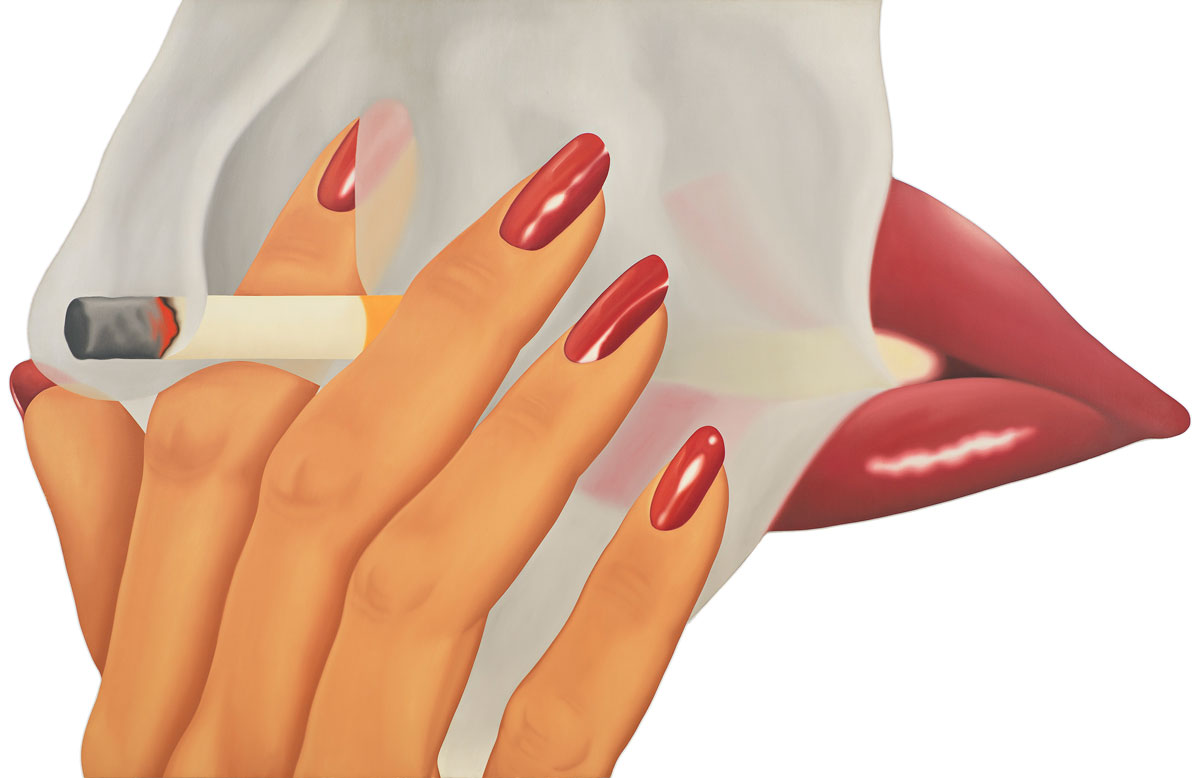 The exhibition “Tom Wesselmann: Intimate Spaces” concentrates on the artist’s primary subject, the female nude, with key works from “Great American Nudes” (1961–73) and subsequent series. With a nod to both the great American novel and the American dream, the title of Great American Nudes also refers to Wesselmann’s affinity for the scale of Abstract Expressionist paintings, billboards, and movie screens. Inspired by Henri Matisse’s odalisques, Wesselmann employed a saturated palette, clearly defined contours, and interlocking positive and negative shapes. The paintings are set in domestic interiors and often incorporate collage and assemblage elements, appearing highly contemporary in their provocative discontinuities of style.Wesselmann’s nudes became icons of the 1960s sexual revolution. Wishing to avoid portraiture, the artist frequently deemphasized facial features, foregrounding both abstraction and overt eroticism. “The figures dealt primarily with their presence,” he wrote (as his pseudonym, Slim Stealingworth). “Personality would interfere with the bluntness of the fact of the nude. When body features were included, they were those important to erotic simplification, like lips and nipples. There was no modelling, no hint at dimension.” Info: Gagosian Gallery, 456 North Camden Drive, Beverly Hills, CA, USA, Duration: 3/5-16/6/2023, Days & Hours: Tue-Sat 10:00-17:30, https://gagosian.com/
The exhibition “Tom Wesselmann: Intimate Spaces” concentrates on the artist’s primary subject, the female nude, with key works from “Great American Nudes” (1961–73) and subsequent series. With a nod to both the great American novel and the American dream, the title of Great American Nudes also refers to Wesselmann’s affinity for the scale of Abstract Expressionist paintings, billboards, and movie screens. Inspired by Henri Matisse’s odalisques, Wesselmann employed a saturated palette, clearly defined contours, and interlocking positive and negative shapes. The paintings are set in domestic interiors and often incorporate collage and assemblage elements, appearing highly contemporary in their provocative discontinuities of style.Wesselmann’s nudes became icons of the 1960s sexual revolution. Wishing to avoid portraiture, the artist frequently deemphasized facial features, foregrounding both abstraction and overt eroticism. “The figures dealt primarily with their presence,” he wrote (as his pseudonym, Slim Stealingworth). “Personality would interfere with the bluntness of the fact of the nude. When body features were included, they were those important to erotic simplification, like lips and nipples. There was no modelling, no hint at dimension.” Info: Gagosian Gallery, 456 North Camden Drive, Beverly Hills, CA, USA, Duration: 3/5-16/6/2023, Days & Hours: Tue-Sat 10:00-17:30, https://gagosian.com/
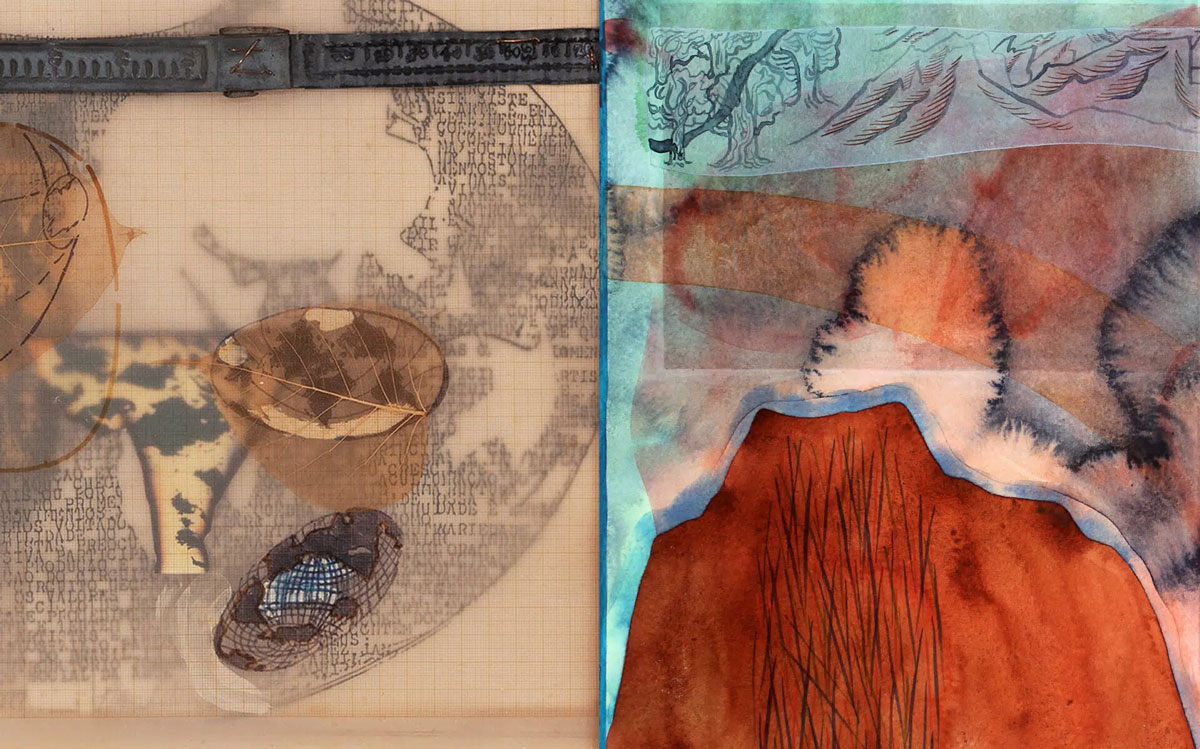 Works by Anna Bella Geiger and Karishma D’Souza are will be on show in Paris. Although they belong to different generations, and different geographies, their poetic systems overlap in many ways. They do, for example, share a common obsession with territories and maps, whether those are contemporary cartographies or ancient mappa mundi, and take a map both as a noun and thus an objectified representation of a land or a globe, and as a verb, in a sense of a conceptual act of “mapping out new meanings”. Their practices are entangled with the idea of storytelling which doesn’t only seek to destabilize an established narrative (which both artists do), but also to gather, archive and protect different viewpoints in the carrier bag of history – and of fiction. This understanding of a fiction as a recipient of the non-heroic and non-linear stories and originating from Ursula Le Guin’s essay “The Carrier Bag Theory of Fiction” from 1986, seems to resonate deeply within the universes of the two artists. Just like Le Guin, both Anna Bella Geiger and Karishma D’Souza outline, in their own unique manner, an alternative to “a linear, progressive Time’s-(killing)-arrow mode of being” which speaks with ‘weapons’ and ‘wars’ far more often than with ‘words’. Info: Xippas Gallery, 108 Rue Vieille-du-Temple, Paris, France, Duration: 4/5-17/6/2023, Days & Hours: Tue-Sat 11:00-19:00, www.xippas.com/
Works by Anna Bella Geiger and Karishma D’Souza are will be on show in Paris. Although they belong to different generations, and different geographies, their poetic systems overlap in many ways. They do, for example, share a common obsession with territories and maps, whether those are contemporary cartographies or ancient mappa mundi, and take a map both as a noun and thus an objectified representation of a land or a globe, and as a verb, in a sense of a conceptual act of “mapping out new meanings”. Their practices are entangled with the idea of storytelling which doesn’t only seek to destabilize an established narrative (which both artists do), but also to gather, archive and protect different viewpoints in the carrier bag of history – and of fiction. This understanding of a fiction as a recipient of the non-heroic and non-linear stories and originating from Ursula Le Guin’s essay “The Carrier Bag Theory of Fiction” from 1986, seems to resonate deeply within the universes of the two artists. Just like Le Guin, both Anna Bella Geiger and Karishma D’Souza outline, in their own unique manner, an alternative to “a linear, progressive Time’s-(killing)-arrow mode of being” which speaks with ‘weapons’ and ‘wars’ far more often than with ‘words’. Info: Xippas Gallery, 108 Rue Vieille-du-Temple, Paris, France, Duration: 4/5-17/6/2023, Days & Hours: Tue-Sat 11:00-19:00, www.xippas.com/
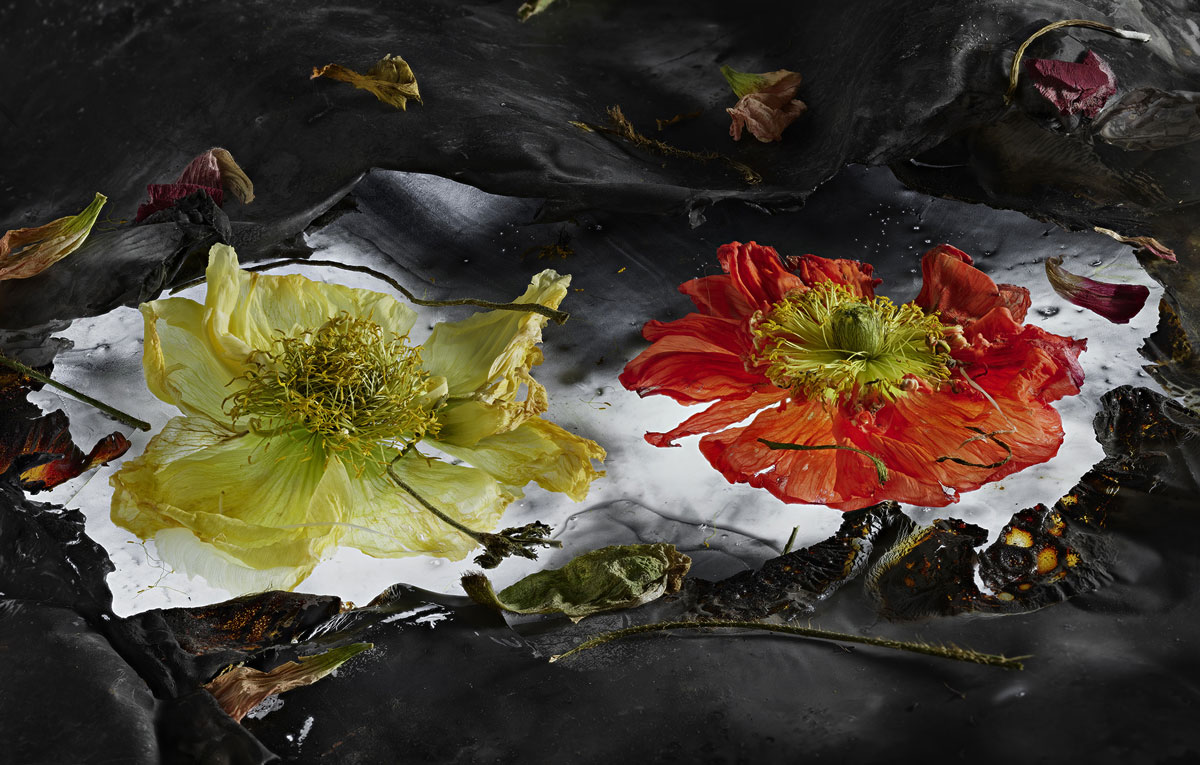 “Amati Fiori” a photographic exhibition of works by Mario Carrieri. For the last forty years, the artistic research of Mario Carrieri has been focused on the theme of the ‘tragic nature of human existence’. Large-scale works, imagined as large stages on which the flower-actors act out the tragedy of the fragility of beauty and the awareness of its transience. Realised on the occasion of Orticola 2023 — an event that aims at promoting the knowledge of plants and flowers — the exhibition has been inspired by the writings by the 1911 Nobel Prize winner, Maurice Maeterlinck. Orticola 2023’s theme aims to stimulate a deeper awareness of plants and flowers, where they are seen not merely as ornaments but as living organisms, highlighting not only their intelligence, but also their ability to adapt, sustain themselves and multiply their species. Info: The Gallerie d’Italia, Piazza della Scala 6, Milan, Italy, Duration: 4/5-4/6/2023, Days & Hours: Tue-Wed & Fri-Sun 9:30-19:30, Thu 9:30, 22:30, https://gallerieditalia.com/it/
“Amati Fiori” a photographic exhibition of works by Mario Carrieri. For the last forty years, the artistic research of Mario Carrieri has been focused on the theme of the ‘tragic nature of human existence’. Large-scale works, imagined as large stages on which the flower-actors act out the tragedy of the fragility of beauty and the awareness of its transience. Realised on the occasion of Orticola 2023 — an event that aims at promoting the knowledge of plants and flowers — the exhibition has been inspired by the writings by the 1911 Nobel Prize winner, Maurice Maeterlinck. Orticola 2023’s theme aims to stimulate a deeper awareness of plants and flowers, where they are seen not merely as ornaments but as living organisms, highlighting not only their intelligence, but also their ability to adapt, sustain themselves and multiply their species. Info: The Gallerie d’Italia, Piazza della Scala 6, Milan, Italy, Duration: 4/5-4/6/2023, Days & Hours: Tue-Wed & Fri-Sun 9:30-19:30, Thu 9:30, 22:30, https://gallerieditalia.com/it/
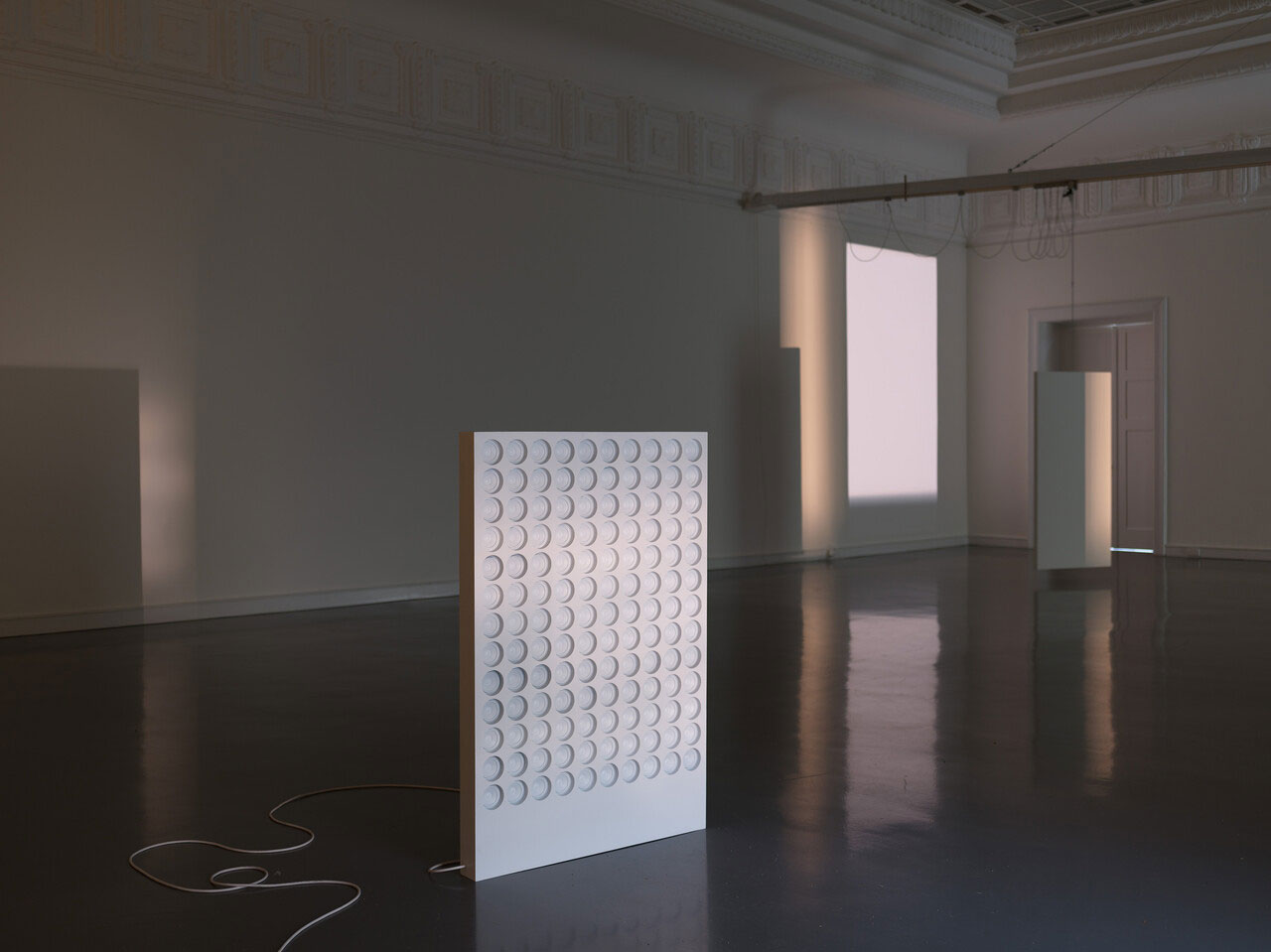 The artist and composer Jan St. Werner, presents his first solo exhibition “Space Synthesis”, St. Werner, best known as a member of the duo Mouse on Mars, transforms the Kunsthalle into a sound space. The exhibition embarks on a dynamic investigation of human thought about sound by assuming that each of us perceives sounds differently. Between different sound sources and sound- reflecting surfaces, a stage—continuously changing in size and shape—is created. Sounds, shadows, walls, performers, and listeners become part of a moving, multi- perspective scenario. Dialogue and exchange play a central role in Werner’s investigation of the relationship between sound and space. Only they make it possible to rethink space, sound, senses, and not least ourselves. Space Synthesis is thus also a practice that opposes the notion of history as fixed knowledge, often manifested in monuments and rigid structures. This practice counters singular monumental thinking and static histories with multiple perspectives and a dynamic interdependence of the senses. Info: Staatliche Kunsthalle Baden-Baden, Lichtentaler Allee 8a, Baden-Baden, Germany, Duration: 5/5-2/7/2023, Days & Hours: Tue-Sat 10:00-18:00, https://kunsthalle-baden-baden.de/
The artist and composer Jan St. Werner, presents his first solo exhibition “Space Synthesis”, St. Werner, best known as a member of the duo Mouse on Mars, transforms the Kunsthalle into a sound space. The exhibition embarks on a dynamic investigation of human thought about sound by assuming that each of us perceives sounds differently. Between different sound sources and sound- reflecting surfaces, a stage—continuously changing in size and shape—is created. Sounds, shadows, walls, performers, and listeners become part of a moving, multi- perspective scenario. Dialogue and exchange play a central role in Werner’s investigation of the relationship between sound and space. Only they make it possible to rethink space, sound, senses, and not least ourselves. Space Synthesis is thus also a practice that opposes the notion of history as fixed knowledge, often manifested in monuments and rigid structures. This practice counters singular monumental thinking and static histories with multiple perspectives and a dynamic interdependence of the senses. Info: Staatliche Kunsthalle Baden-Baden, Lichtentaler Allee 8a, Baden-Baden, Germany, Duration: 5/5-2/7/2023, Days & Hours: Tue-Sat 10:00-18:00, https://kunsthalle-baden-baden.de/
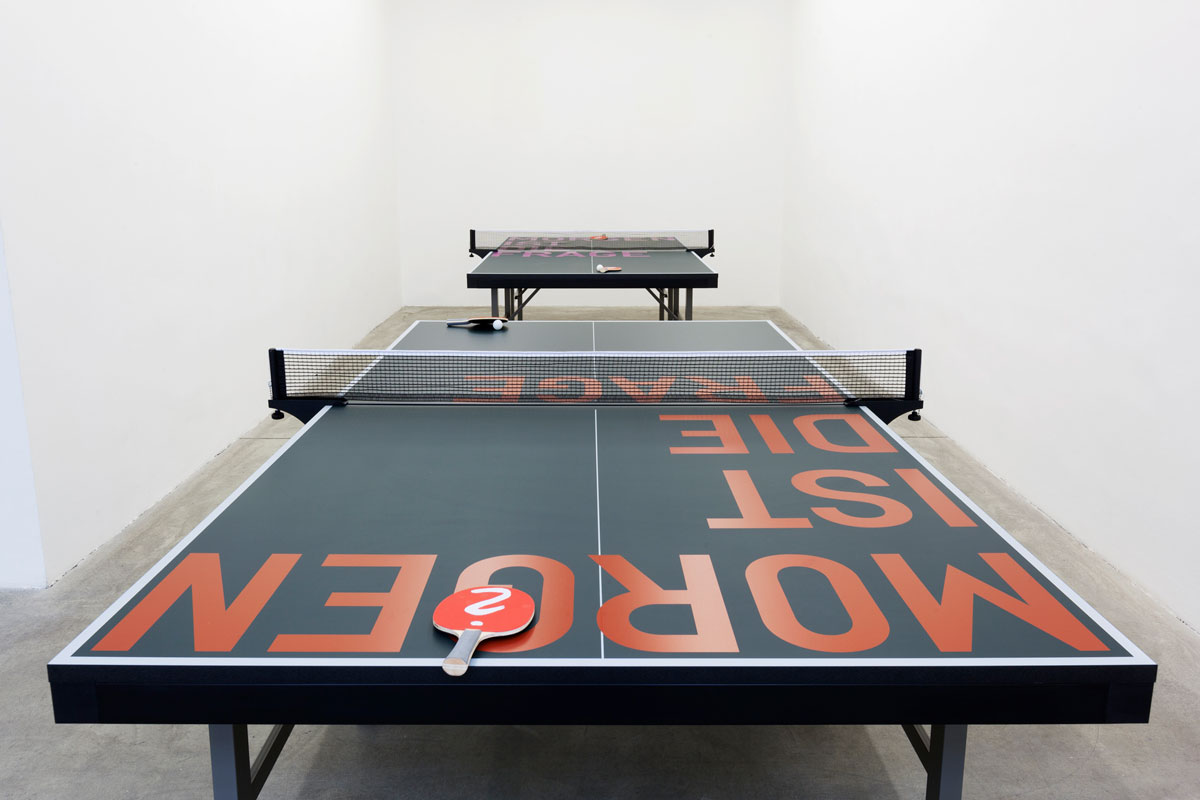 The work of Rirkrit Tiravanija will be presented throughout the month of May at various sites in Haus der Kunst, forming a de-centralised exhibition. In a first collaboration between Haus der Kunst and the Bayerische Staatsoper in Munich, the exhibition takes place at the same time as Toshio Hosokawa’s opera Hanjo, which is being performed in the Westgalerie of Haus der Kunst and for which Rirkrit Tiravanija is creating the stage design. The practice of Rirkrit Tiravanija focuses on the artistic production of social engagement, often inviting viewers to inhabit, participate and activate his work, engaging in shared rituals and actions. Over the course of his thirty-year career, he has also come to incorporate installations, painting, printmaking, video, photography, mixed-media assemblage, and music into his practice, but always with an emphasis on varied cultural spaces and temporalities. Parallel to the performances of Hanjo in the Westgalerie, Tiravanija’s work will be presented at various sites of the Museum. Info: Emma Enderby with Hanns Lennart Wiesner, Haus der Kunst, Prinzregentenstr. 1, Munich, Germany, Duration: 5-29/5/2023, Days & Hours: Mon, Wed & Fri-Sun 10:00-20:00, Thu 19:99-22:00, www.hausderkunst.de/
The work of Rirkrit Tiravanija will be presented throughout the month of May at various sites in Haus der Kunst, forming a de-centralised exhibition. In a first collaboration between Haus der Kunst and the Bayerische Staatsoper in Munich, the exhibition takes place at the same time as Toshio Hosokawa’s opera Hanjo, which is being performed in the Westgalerie of Haus der Kunst and for which Rirkrit Tiravanija is creating the stage design. The practice of Rirkrit Tiravanija focuses on the artistic production of social engagement, often inviting viewers to inhabit, participate and activate his work, engaging in shared rituals and actions. Over the course of his thirty-year career, he has also come to incorporate installations, painting, printmaking, video, photography, mixed-media assemblage, and music into his practice, but always with an emphasis on varied cultural spaces and temporalities. Parallel to the performances of Hanjo in the Westgalerie, Tiravanija’s work will be presented at various sites of the Museum. Info: Emma Enderby with Hanns Lennart Wiesner, Haus der Kunst, Prinzregentenstr. 1, Munich, Germany, Duration: 5-29/5/2023, Days & Hours: Mon, Wed & Fri-Sun 10:00-20:00, Thu 19:99-22:00, www.hausderkunst.de/
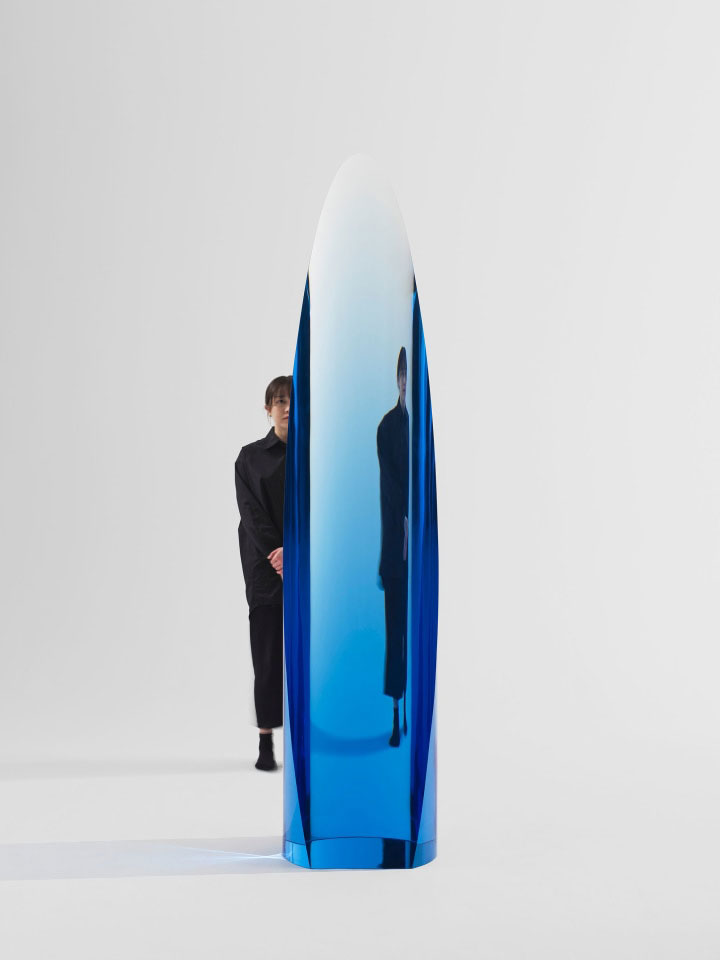 “Cylindrical Lenses” is the title Fred Eversley’s first solo gallery show in New York since 1976, is a significant occasion in the six-decade career of a pioneering artist long associated with the Light and Space movement. It represents an artistic homecoming: having worked in Los Angeles for over fifty years, in 2019, Eversley permanently returned to the city where he was born and raised. The show also marks the debut of Eversley’s large-scale “Cylindrical Lenses”, a major new body of work. The six vertically oriented, monumental sculptures on view are made in tinted resin and measure between seven and nine feet tall. These luminous, free-standing objects embody the future and the past of the artist’s project, forging important connections to his earliest work. As a whole, the installation comprises a sextet in a vivid palette of violet, rose, coral, blue, cyan, and turquoise, with the sculptures positioned so that they can be seen on their own and through one another, aligning a field of multilayered colors and visual entry points. Info: David Kordansky Gallery, 520 West 20th Street, New York, NY, USA, Duration: 6/5-10/6/2023, Days & Hours: Tue-Sat 10:00-18:00, www.davidkordanskygallery.com/
“Cylindrical Lenses” is the title Fred Eversley’s first solo gallery show in New York since 1976, is a significant occasion in the six-decade career of a pioneering artist long associated with the Light and Space movement. It represents an artistic homecoming: having worked in Los Angeles for over fifty years, in 2019, Eversley permanently returned to the city where he was born and raised. The show also marks the debut of Eversley’s large-scale “Cylindrical Lenses”, a major new body of work. The six vertically oriented, monumental sculptures on view are made in tinted resin and measure between seven and nine feet tall. These luminous, free-standing objects embody the future and the past of the artist’s project, forging important connections to his earliest work. As a whole, the installation comprises a sextet in a vivid palette of violet, rose, coral, blue, cyan, and turquoise, with the sculptures positioned so that they can be seen on their own and through one another, aligning a field of multilayered colors and visual entry points. Info: David Kordansky Gallery, 520 West 20th Street, New York, NY, USA, Duration: 6/5-10/6/2023, Days & Hours: Tue-Sat 10:00-18:00, www.davidkordanskygallery.com/
 Celebrating the hundred-and-tenth anniversary of the artist’s birth, an exhibition illustrates the importance of Wols’ unique art through the largest collection of works on canvas and paper, photographs, printed works and letters ever assembled in France, from the Karsten Greve collection as well as other major private collections. Most of Wols’ paintings were created as late as 1945, with the support of the gallerist René Drouin. Despite the disastrous post-war context, the exhibition sparked a keen interest among the artistic and literary spheres of Paris, making Wols one of the major figures of the new world. Wols produced fewer than a hundred paintings. They represent a tumultuous pandemonium through increasingly abstract compositions in which technique and matter set the tone. In 1946, he grew close to Jean-Paul Sartre and Simone de Beauvoir, whom he met in Saint-Germain-des-Prés. Le Tourbillon (“The Whirlwind”), an enigmatic painting from 1947, uses a succession of circular brushstrokes to portray the existentialism that was then taking hold of Paris, the layers of paint corresponding to layers of thoughts. Info: Galerie Karsten Greve, 5 rue Debelleyme, Paris, France, Duration: 6/5-5/8/2023, Days & Hours: Tue-Sat 10:00-19:00, https://galerie-karsten-greve.com/
Celebrating the hundred-and-tenth anniversary of the artist’s birth, an exhibition illustrates the importance of Wols’ unique art through the largest collection of works on canvas and paper, photographs, printed works and letters ever assembled in France, from the Karsten Greve collection as well as other major private collections. Most of Wols’ paintings were created as late as 1945, with the support of the gallerist René Drouin. Despite the disastrous post-war context, the exhibition sparked a keen interest among the artistic and literary spheres of Paris, making Wols one of the major figures of the new world. Wols produced fewer than a hundred paintings. They represent a tumultuous pandemonium through increasingly abstract compositions in which technique and matter set the tone. In 1946, he grew close to Jean-Paul Sartre and Simone de Beauvoir, whom he met in Saint-Germain-des-Prés. Le Tourbillon (“The Whirlwind”), an enigmatic painting from 1947, uses a succession of circular brushstrokes to portray the existentialism that was then taking hold of Paris, the layers of paint corresponding to layers of thoughts. Info: Galerie Karsten Greve, 5 rue Debelleyme, Paris, France, Duration: 6/5-5/8/2023, Days & Hours: Tue-Sat 10:00-19:00, https://galerie-karsten-greve.com/
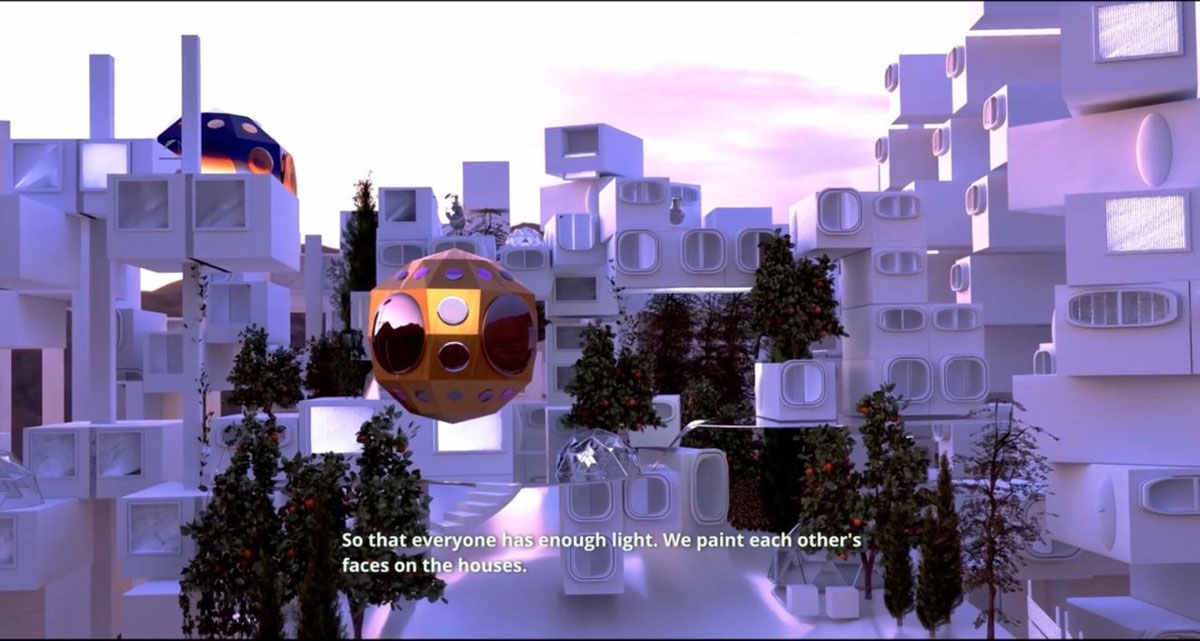 The exhibition “Kaleidoscope of (Hi)stories. Ukrainian Art 1912–2023” is a comprehensive survey to modern Ukrainian art. It is the first of its kind in Germany and Europe. Paintings, sculptures, photographs, installations, video works, graphic art and archives represent Ukrainian art from the beginning of the 20th century to the present. In the process, some of the exhibited works travel outside the country for the first time and provide insights into Ukraine’s eventful history as well as its constant struggle for its own self-image. The exhibition is conceived similar to a journey and consists of four main themes that overlap: “Practices of Resistance”, “Culture of Memory”, “Spaces of Freedom” and “Thoughts on the Future”. In them, the current situation combines with historical processes and reveals individual experiences and personal stories. Each position represents a specific microcosm interwoven with the history of the country, its art and heritage. As a result, the complexity and diversity of today’s Ukrainian art scene unfolds. The exhibition tells many stories about the country’s fluctuating state. It deals with self-knowledge in Ukrainian history, which unfolds less out of pride than under external duress. Info: Albertinum, Salzgasse, Dresden, Germany, Duration: 6/5-10/9/2023, Days & Hours: Tue-Sun 10:00-18:00, https://albertinum.skd.museum/
The exhibition “Kaleidoscope of (Hi)stories. Ukrainian Art 1912–2023” is a comprehensive survey to modern Ukrainian art. It is the first of its kind in Germany and Europe. Paintings, sculptures, photographs, installations, video works, graphic art and archives represent Ukrainian art from the beginning of the 20th century to the present. In the process, some of the exhibited works travel outside the country for the first time and provide insights into Ukraine’s eventful history as well as its constant struggle for its own self-image. The exhibition is conceived similar to a journey and consists of four main themes that overlap: “Practices of Resistance”, “Culture of Memory”, “Spaces of Freedom” and “Thoughts on the Future”. In them, the current situation combines with historical processes and reveals individual experiences and personal stories. Each position represents a specific microcosm interwoven with the history of the country, its art and heritage. As a result, the complexity and diversity of today’s Ukrainian art scene unfolds. The exhibition tells many stories about the country’s fluctuating state. It deals with self-knowledge in Ukrainian history, which unfolds less out of pride than under external duress. Info: Albertinum, Salzgasse, Dresden, Germany, Duration: 6/5-10/9/2023, Days & Hours: Tue-Sun 10:00-18:00, https://albertinum.skd.museum/
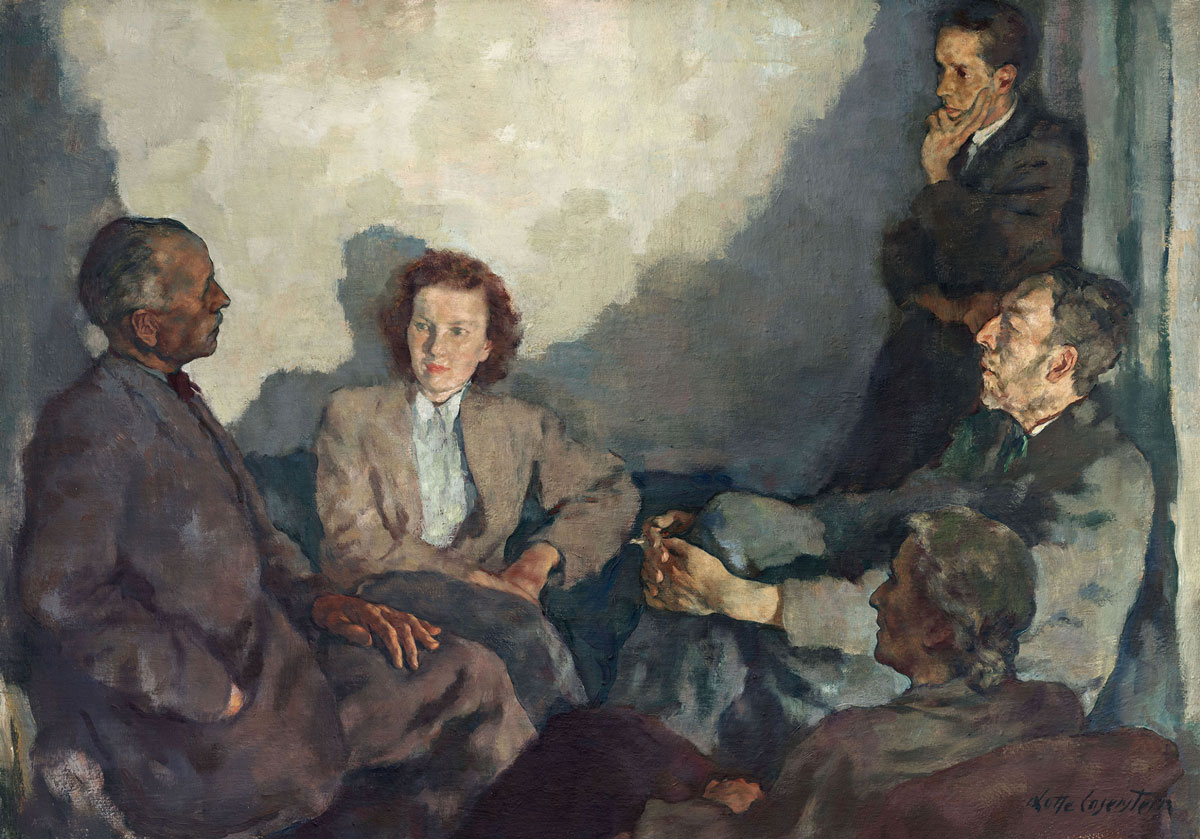 “A Divided Life” is the largest exhibition of the long-forgotten Lotte Laserstein’s work to date in the Nordic Region and focuses as much on the multifaceted works she created in exile in Sweden as it does on those she made before leaving Germany. After graduating from the Academy of Arts in 1927 – as one of the first women to earn a degree, he quickly succeeded in making a name for herself in the city’s art scene. Laserstein captured the spirit of an era in scenes from her studio and portraits of cosmopolitan, emancipated women. The success predicted for Lotte Laserstein and ascribed to her by German art critics in the 1920s ended abruptly in 1933 when the Nazis seized power. As a Jew, Laserstein was increasingly excluded from the public art world. Thanks to an invitation to show her work at the Galerie Moderne in Stockholm in 1937, she was able to get out of Germany with some of her most important works and come to Sweden, where she would spend the greater part of her working life. In Sweden, Laserstein was able to build a new life for herself as a portrait and landscape painter. For five decades, Laserstein produced an extremely comprehensive, thematic, and stylistically multifaceted collection of works that has only partially come to light in earlier shows. Info: Curators: Iris Müller-Westermann and Anna-Carola Krausse, Moderna Museet, Ola Billgrens plats 2–4, Malmö, Sweden, Duration: 6/5-1/10/2023, Days & Hours: Tue-Wed & Fri-Sun 11:00-17:00, Thu 11:00-19:00, www.modernamuseet.se/
“A Divided Life” is the largest exhibition of the long-forgotten Lotte Laserstein’s work to date in the Nordic Region and focuses as much on the multifaceted works she created in exile in Sweden as it does on those she made before leaving Germany. After graduating from the Academy of Arts in 1927 – as one of the first women to earn a degree, he quickly succeeded in making a name for herself in the city’s art scene. Laserstein captured the spirit of an era in scenes from her studio and portraits of cosmopolitan, emancipated women. The success predicted for Lotte Laserstein and ascribed to her by German art critics in the 1920s ended abruptly in 1933 when the Nazis seized power. As a Jew, Laserstein was increasingly excluded from the public art world. Thanks to an invitation to show her work at the Galerie Moderne in Stockholm in 1937, she was able to get out of Germany with some of her most important works and come to Sweden, where she would spend the greater part of her working life. In Sweden, Laserstein was able to build a new life for herself as a portrait and landscape painter. For five decades, Laserstein produced an extremely comprehensive, thematic, and stylistically multifaceted collection of works that has only partially come to light in earlier shows. Info: Curators: Iris Müller-Westermann and Anna-Carola Krausse, Moderna Museet, Ola Billgrens plats 2–4, Malmö, Sweden, Duration: 6/5-1/10/2023, Days & Hours: Tue-Wed & Fri-Sun 11:00-17:00, Thu 11:00-19:00, www.modernamuseet.se/
 Concert, performance, exhibition “ton not. not ton” is devoted to the sound of things—sound emerging in the form of acoustic interventions, in objects arranged within the space and in one’s own imagination. It is all about the infusion of visual art with music. This second edition focuses on textures, frequencies, structures, colors, patterns and movement. Likewise, the score or choreography is considered as a formative and visual instrument. ton not. not ton examines the way in which sound articulates motion, spaces, dynamics and, above all, time. As in the musical contributions, rhythm is also inherent in the works of visual art, giving them a performativity of their own. With Lisa Alvarado, Samuel Beckett, Gavsborg, Channa Horwitz, Anja Kreysing and Musica Mosaica, the second edition of “ton not. not ton” also compiles contributions by both visual artists and musicians, bringing together those who operate at the boundaries of their respective fields. Info: Curators: Nguyen Phuong-Dan and Merle Radtke, Kunsthalle Münster, Hafenweg 28, 5th floor, Münster, Germany, Duration: 6/5-4/6/2023, Days 7 Hours: Tue-Sun 12:00-18:00, www.kunsthallemuenster.de/
Concert, performance, exhibition “ton not. not ton” is devoted to the sound of things—sound emerging in the form of acoustic interventions, in objects arranged within the space and in one’s own imagination. It is all about the infusion of visual art with music. This second edition focuses on textures, frequencies, structures, colors, patterns and movement. Likewise, the score or choreography is considered as a formative and visual instrument. ton not. not ton examines the way in which sound articulates motion, spaces, dynamics and, above all, time. As in the musical contributions, rhythm is also inherent in the works of visual art, giving them a performativity of their own. With Lisa Alvarado, Samuel Beckett, Gavsborg, Channa Horwitz, Anja Kreysing and Musica Mosaica, the second edition of “ton not. not ton” also compiles contributions by both visual artists and musicians, bringing together those who operate at the boundaries of their respective fields. Info: Curators: Nguyen Phuong-Dan and Merle Radtke, Kunsthalle Münster, Hafenweg 28, 5th floor, Münster, Germany, Duration: 6/5-4/6/2023, Days 7 Hours: Tue-Sun 12:00-18:00, www.kunsthallemuenster.de/
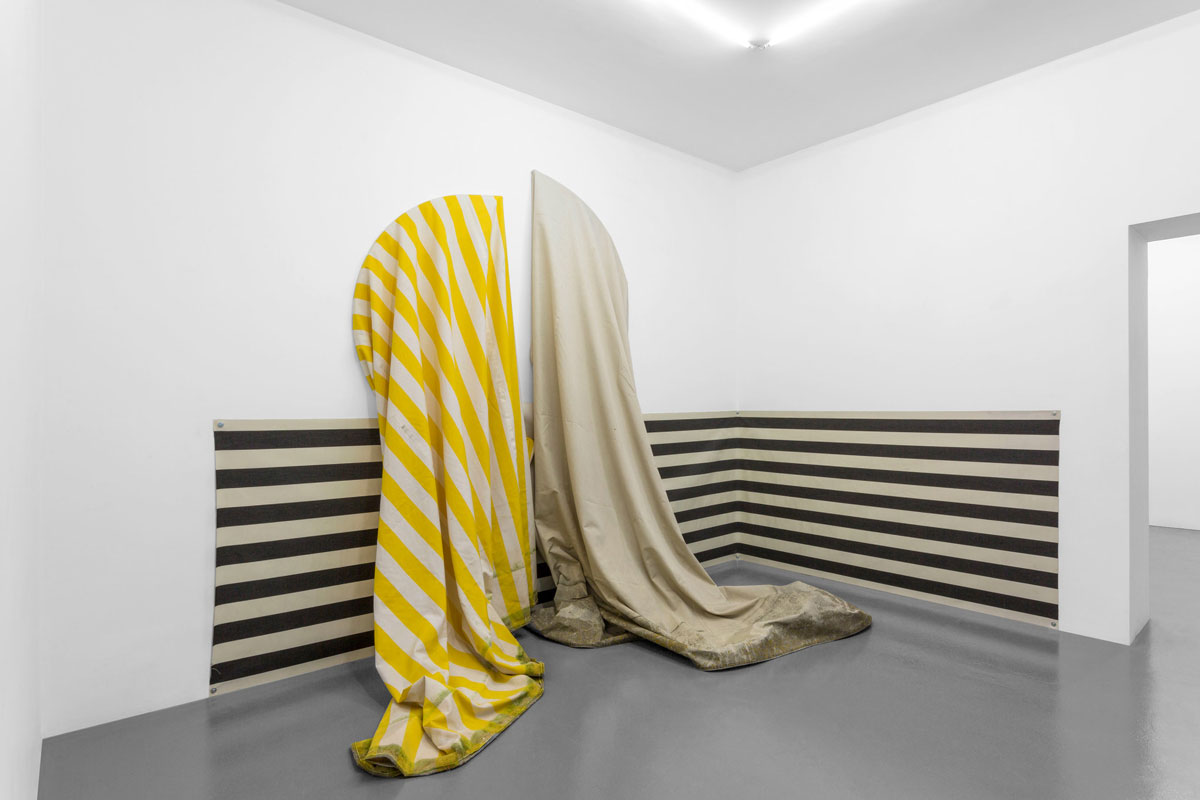 “Jelliz & Gestes” is a sequel of an urban experience translating Sonia Kacem’s expressions and impressions into shapes and vibrations. The idea was to create a sense of energy and movement in space, drawing the viewer’s eye and creating a dynamic visual experience. The use of pattern on pattern creates a complex image that requires both a sense of proximity for a detailed view and a step back for an overall perception. The idea of abstraction and what it represents in the Arab world interested Sonia Kacem even before her residency at L’Atelier Selma Feriani Gallery in Spring 2022. Once in Tunis, Kacem’s wanderings in the Bhar Lazreg neighborhood (an artisanal and industrial district where the studio is located) served as a landmark to define her forms, gestures, and colors. The random scratches and engravings on the concrete walls she encountered often implied a spontaneous gesture rather than a precise and well-measured approach. This motivated her to create paintings and patterns emanating from the various impressions she gathered during her visit to Tunis…Echoing Chemla’s ceramic panels, Kacem thought of her interactions with urban space as a contemporary composition in a built-in environment of patterns. Info: Selma Feriani Gallery, 8 Place Sidi Hassine, Sidi Bou Said 2026, Tunisia, Duration: 8/6-9/7/2023, Days & Hours: Mon-Fri 10:00-13:00 & 14:00-18:00, Sat-Sun 9:00-16:00, https://www.selmaferiani.com/
“Jelliz & Gestes” is a sequel of an urban experience translating Sonia Kacem’s expressions and impressions into shapes and vibrations. The idea was to create a sense of energy and movement in space, drawing the viewer’s eye and creating a dynamic visual experience. The use of pattern on pattern creates a complex image that requires both a sense of proximity for a detailed view and a step back for an overall perception. The idea of abstraction and what it represents in the Arab world interested Sonia Kacem even before her residency at L’Atelier Selma Feriani Gallery in Spring 2022. Once in Tunis, Kacem’s wanderings in the Bhar Lazreg neighborhood (an artisanal and industrial district where the studio is located) served as a landmark to define her forms, gestures, and colors. The random scratches and engravings on the concrete walls she encountered often implied a spontaneous gesture rather than a precise and well-measured approach. This motivated her to create paintings and patterns emanating from the various impressions she gathered during her visit to Tunis…Echoing Chemla’s ceramic panels, Kacem thought of her interactions with urban space as a contemporary composition in a built-in environment of patterns. Info: Selma Feriani Gallery, 8 Place Sidi Hassine, Sidi Bou Said 2026, Tunisia, Duration: 8/6-9/7/2023, Days & Hours: Mon-Fri 10:00-13:00 & 14:00-18:00, Sat-Sun 9:00-16:00, https://www.selmaferiani.com/
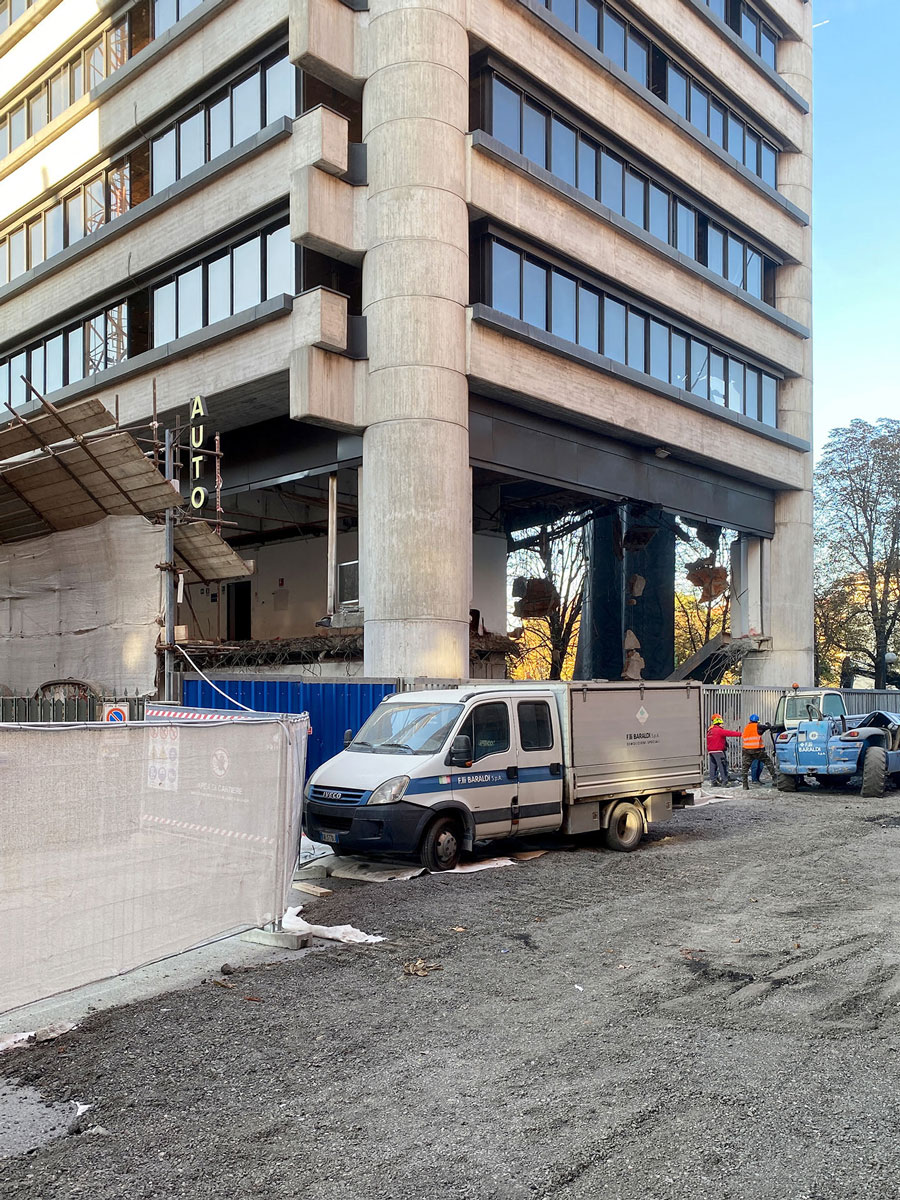 Andreas Fogarasi presents “1978” his first solo exhibition in Turin, hiswork focuses on points of contact between visual culture—fine art, design, architecture—and social reality. What do society, politics, or history “look like”? Where and how do the basic parameters of our communities become apparent in the thoroughly designed settings of our everyday lives? The city with its manifold surfaces is a central object of Fogarasi’s observations. Scrutinizing its ever-changing fabric, he analyses the emergence and visible expression of political, economic, cultural, and sociological structures. Processes of urban transformation and their manifestations in surfaces are also at the heart of his series “Nine Buildings, Stripped” (ongoing since 2019)—wall-mounted “material packages” composed of fragments of buildings that no longer exist (façade elements, floor tiles, windows, bricks, etc.), they offer radically abstract portraits of specific urban situations, reduced to materiality, colours, and tactile qualities. Between image and sculpture, surface and depth, document and construct, they embody examples of how we constantly build and rebuild: material freeze-frames that capture the complexity of the city’s genesis in vivid tableaux. Info: Quartz Studio,Via Giulia di Barolo 18/D, Turin, Italy, Duration: 8/5-22/7/2023, www.quartzstudio.net/
Andreas Fogarasi presents “1978” his first solo exhibition in Turin, hiswork focuses on points of contact between visual culture—fine art, design, architecture—and social reality. What do society, politics, or history “look like”? Where and how do the basic parameters of our communities become apparent in the thoroughly designed settings of our everyday lives? The city with its manifold surfaces is a central object of Fogarasi’s observations. Scrutinizing its ever-changing fabric, he analyses the emergence and visible expression of political, economic, cultural, and sociological structures. Processes of urban transformation and their manifestations in surfaces are also at the heart of his series “Nine Buildings, Stripped” (ongoing since 2019)—wall-mounted “material packages” composed of fragments of buildings that no longer exist (façade elements, floor tiles, windows, bricks, etc.), they offer radically abstract portraits of specific urban situations, reduced to materiality, colours, and tactile qualities. Between image and sculpture, surface and depth, document and construct, they embody examples of how we constantly build and rebuild: material freeze-frames that capture the complexity of the city’s genesis in vivid tableaux. Info: Quartz Studio,Via Giulia di Barolo 18/D, Turin, Italy, Duration: 8/5-22/7/2023, www.quartzstudio.net/
